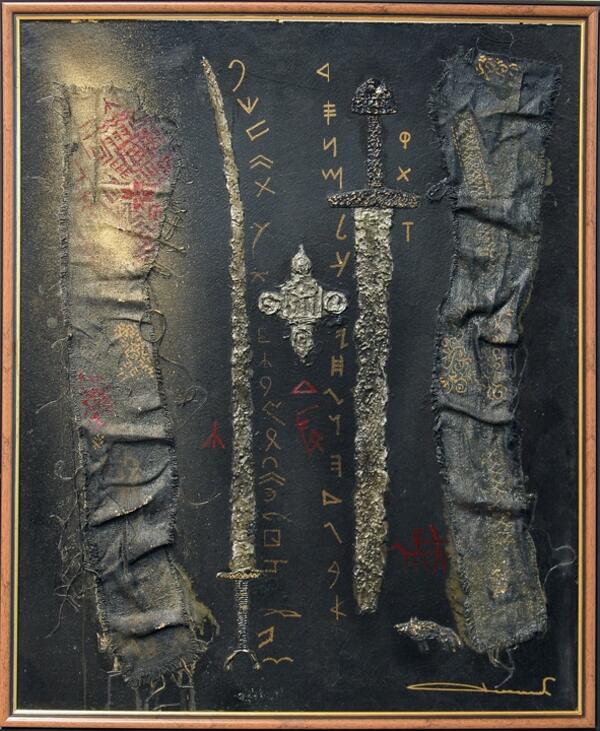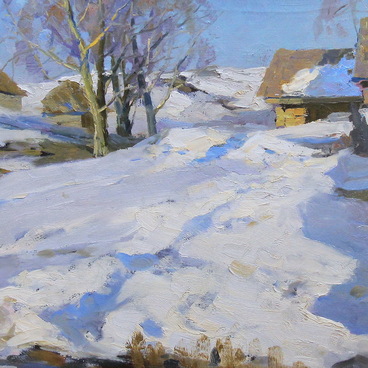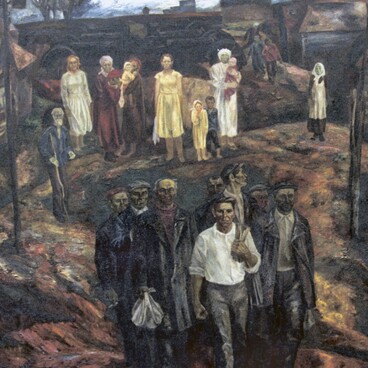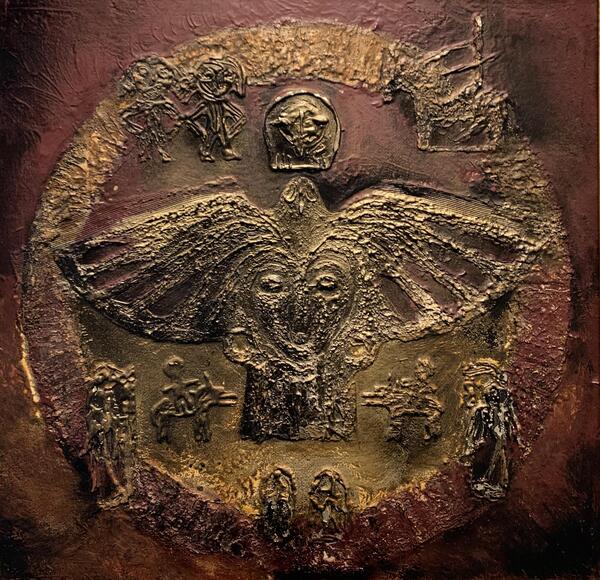In his works, Andrey Stepanovich Alyoshkin (1959–2021), an Honored Artist of the Republic of Mordovia, elaborated on the idea of ethnogenesis of the Mordovian people in avant-garde forms. The scope of his artistic interests was very diverse: the painter worked as a graphic artist and teacher, screenwriter and writer. He also designed the flag of the Republic of Mordovia.
Andrey Alyoshkin studied in Leningrad: he graduated from the Valentin Serov Art School and the Ilya Repin Institute of Painting, Sculpture and Architecture. The artist had many solo exhibitions in Russia: in Syktyvkar, Saransk, Penza, Yoshkar-Ola, Moscow, Chelyabinsk, Samara, Sarov, and Kazan.
In his art, Andrey Alyoshkin explored the origins of the Mordvins and their connection with other Finno-Ugric peoples. The traditions of this ancient ethnic group date back many centuries: the Erzya and Moksha ethnicities are believed to have formed in the first millennium BC. These tribes settled the area that included the valleys of the rivers Oka, Tsna, Moksha, Sura and the middle Volga.
The canvas “Encolpion” is part of the series “Torpinge”, which can be translated as “time of the sword”. The artist chose the sword as a symbol of combat might.
An encolpion is a small, usually cross-shaped medallion. Saints or Jesus Christ could be depicted on it. It contained particles of a consecrated prosphora (liturgical bread) or relics of saints. In the work of Andrey Alyoshkin, the encolpion acts as a symbol of the preservation of ancient spiritual power, which has been lost by the modern generation.
This spiritual force seems to break across the centuries through this canvas that resembles a display of archaeological finds. It is no coincidence that Andrey Alyoshkin actively uses non-traditional art materials, such as fabric, and mixed media to convey the relief texture.
The symbols of two swords (one is depicted with the hilt up, the other — with the handle down), the image of a wolf, the encolpion and runic writing — everything in this picture can tell us about the way of life and culture of the Mordovian people. This information is no longer easily understandable to the modern Mordvins, but the mighty ancient spirit lives in the canvas and conveys to the audience an idea of the wisdom of the ancestors.
Andrey Alyoshkin studied in Leningrad: he graduated from the Valentin Serov Art School and the Ilya Repin Institute of Painting, Sculpture and Architecture. The artist had many solo exhibitions in Russia: in Syktyvkar, Saransk, Penza, Yoshkar-Ola, Moscow, Chelyabinsk, Samara, Sarov, and Kazan.
In his art, Andrey Alyoshkin explored the origins of the Mordvins and their connection with other Finno-Ugric peoples. The traditions of this ancient ethnic group date back many centuries: the Erzya and Moksha ethnicities are believed to have formed in the first millennium BC. These tribes settled the area that included the valleys of the rivers Oka, Tsna, Moksha, Sura and the middle Volga.
The canvas “Encolpion” is part of the series “Torpinge”, which can be translated as “time of the sword”. The artist chose the sword as a symbol of combat might.
An encolpion is a small, usually cross-shaped medallion. Saints or Jesus Christ could be depicted on it. It contained particles of a consecrated prosphora (liturgical bread) or relics of saints. In the work of Andrey Alyoshkin, the encolpion acts as a symbol of the preservation of ancient spiritual power, which has been lost by the modern generation.
This spiritual force seems to break across the centuries through this canvas that resembles a display of archaeological finds. It is no coincidence that Andrey Alyoshkin actively uses non-traditional art materials, such as fabric, and mixed media to convey the relief texture.
The symbols of two swords (one is depicted with the hilt up, the other — with the handle down), the image of a wolf, the encolpion and runic writing — everything in this picture can tell us about the way of life and culture of the Mordovian people. This information is no longer easily understandable to the modern Mordvins, but the mighty ancient spirit lives in the canvas and conveys to the audience an idea of the wisdom of the ancestors.




